Best trees for fall color – with beautiful foliage
These best trees for fall color put on a stunning display of fall leaf color to add interest to your seasonal garden

Rachel Crow
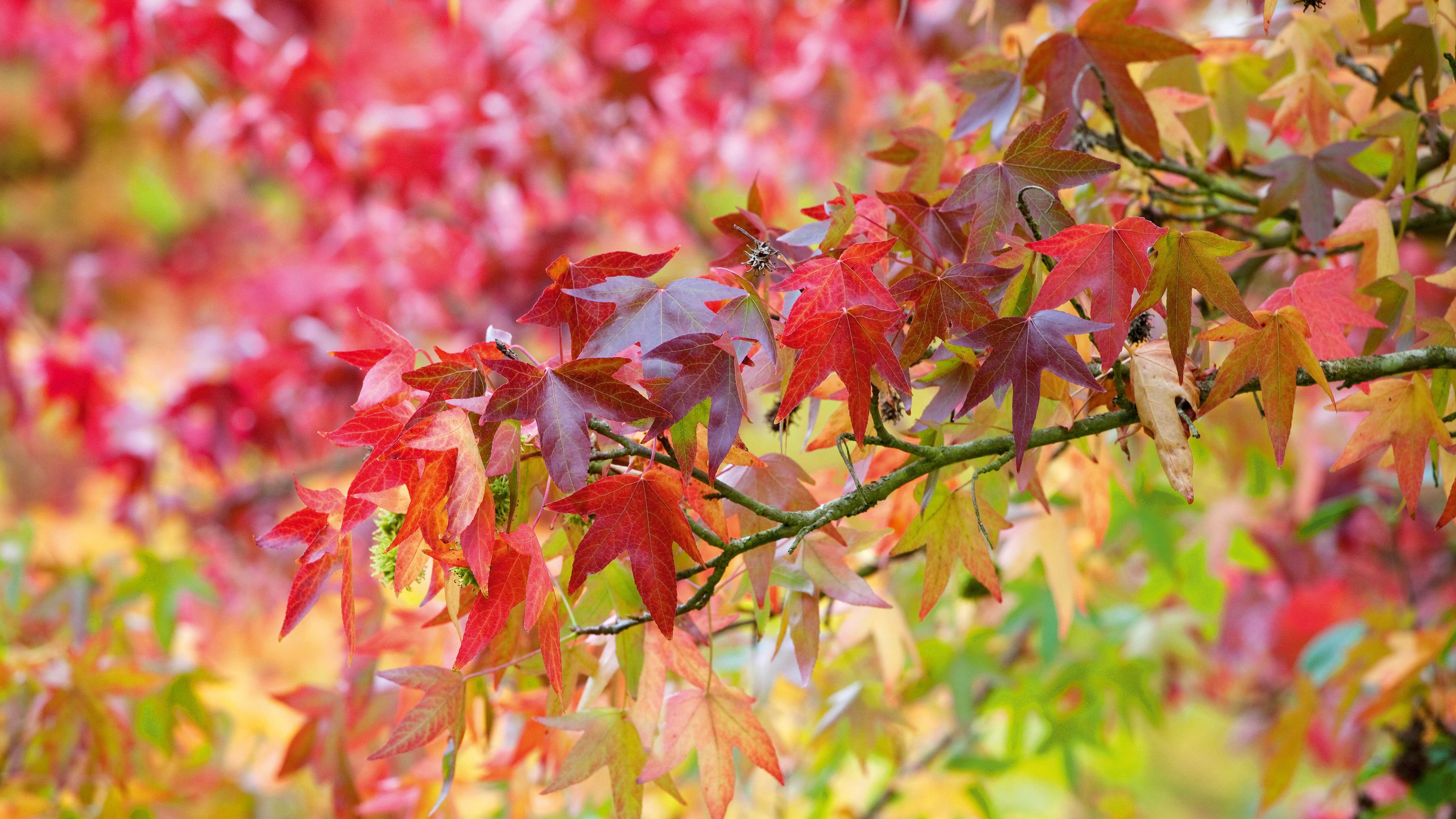
There are many options of trees for fall color that can add wonderful shades of red, yellow and gold to your seasonal garden with their striking foliage in dramatic fiery shades.
With foliage on the turn, fall is the time to enjoy the crescendo of colors from some of the best trees that showcase the seasonal palette. This changing shade spectrum is one of nature’s most stunning tricks and by filling your garden with a selection of evergreen and deciduous trees for fall color as part of your garden ideas, you can enjoy a magical seasonal spectacle.
Deciduous trees shed a fluttering cascade of leaves, forming a carpet underfoot in a kaleidoscope of fall colors, from ochre and burnt orange, through russet, bronze, crimson and deep plum. As well as the cornucopia of color from leaves, trees with red berries and bearing other berry colors are a vital food source that have the added advantage of attracting birds and other wildlife into your garden. For the most dramatic effects, mix them with evergreen trees for privacy and screening that will provide a darker backdrop to the vivid hues.
Best trees for fall color
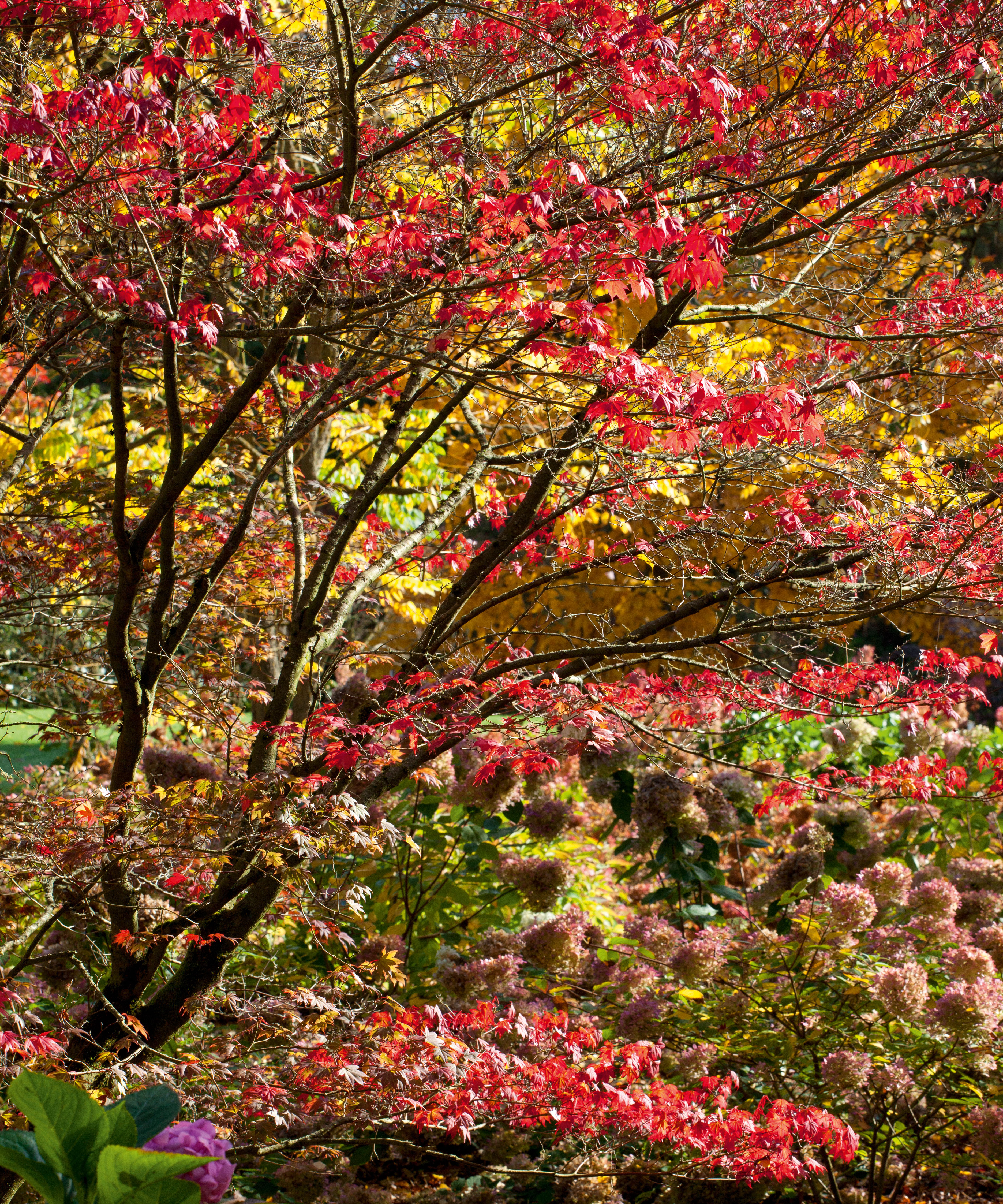
There are choices for of trees for fall color of all sizes and it's important to consider the height and spread of your chosen variety to make sure you have space for it. Even if you have a very small backyard or courtyard, there are trees for small gardens, as well as best trees to grow in pots that offer fall color.
Make sure you know how to plant a tree before you start digging. The best time to plant them is in the colder months, from November to March, depending on the climate in your hardiness zone. In general, though, if you plant before your tree before Christmas it will establish better as the soil is warmer.
Many of these trees for fall color are easy to grow, don’t require much pruning and tolerate a range of soils and climatic conditions. There are also those with the added dimension of beautiful ornamental bark that can take center stage as they shed their leaves and reveal their naked forms.
Even once they have shed their leaves, by combining these trees for fall color with clever landscaping around trees, you can ensure there will still be interest in the areas of the garden where they are planted.
Design expertise in your inbox – from inspiring decorating ideas and beautiful celebrity homes to practical gardening advice and shopping round-ups.
Best trees for fall color for any location
The experts from Hillier nurseries and garden centers pick out a couple of trees for fall color that are resilient and can cope with a range of garden conditions.
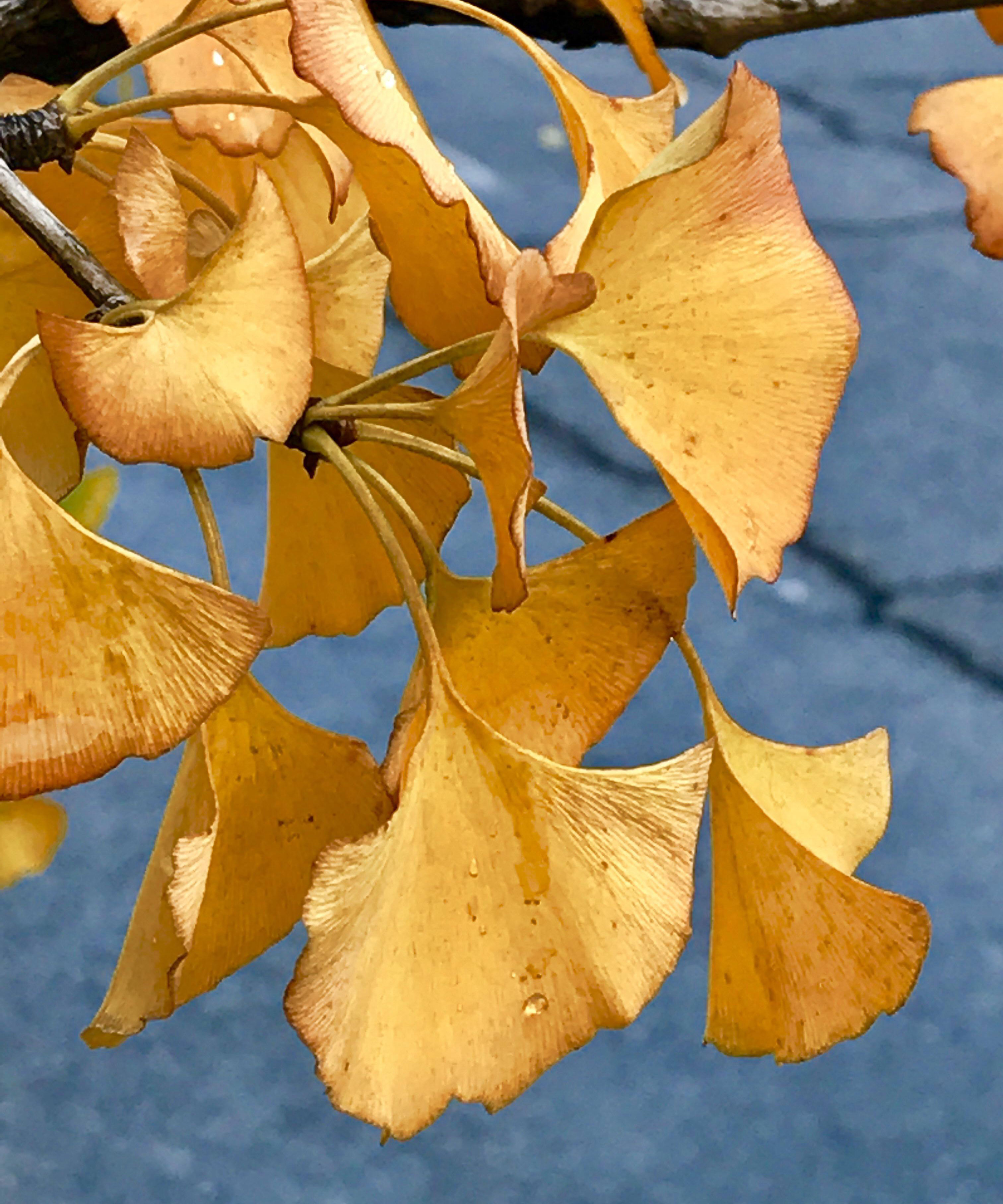
Gingko Biloba – the Maidenhair tree, is renowned for its unusual leaf shape, and is a favorite among landscapers the world over,' they explain.
A resilient and interesting tree, Ginkgo’s unique fan shaped leaves boast a bright uniform golden hue. The name biloba is derived from ‘bis’ meaning two, and ‘loba’ meaning lobed, referring to the shape and split of the leaves.
When considering how to grow a ginkgo tree, they can be pruned to achieve a multitude of forms and 'when planted and matured along avenues, the fall show of its golden leaves is breathtakingly beautiful,' add the Hillier experts.
A tough tree that will establish in any soil structure with good drainage, it can tolerate a crammed, compacted root space in an urban backyard.
‘Gingko Biloba are slow growing but worth the payoff,’ says Matt Hartline, ISA Board Certified Master Arborist and partner at Bill Miller & Associates. ‘if you didn’t plant one ten years ago… there’s no time like the present. And for smaller spaces – front yards, terraces, foundation beds – there is a litany of ornamental species to choose from that won’t overwhelm,’ he adds.
The female ginkgo also produces fruit in fall.
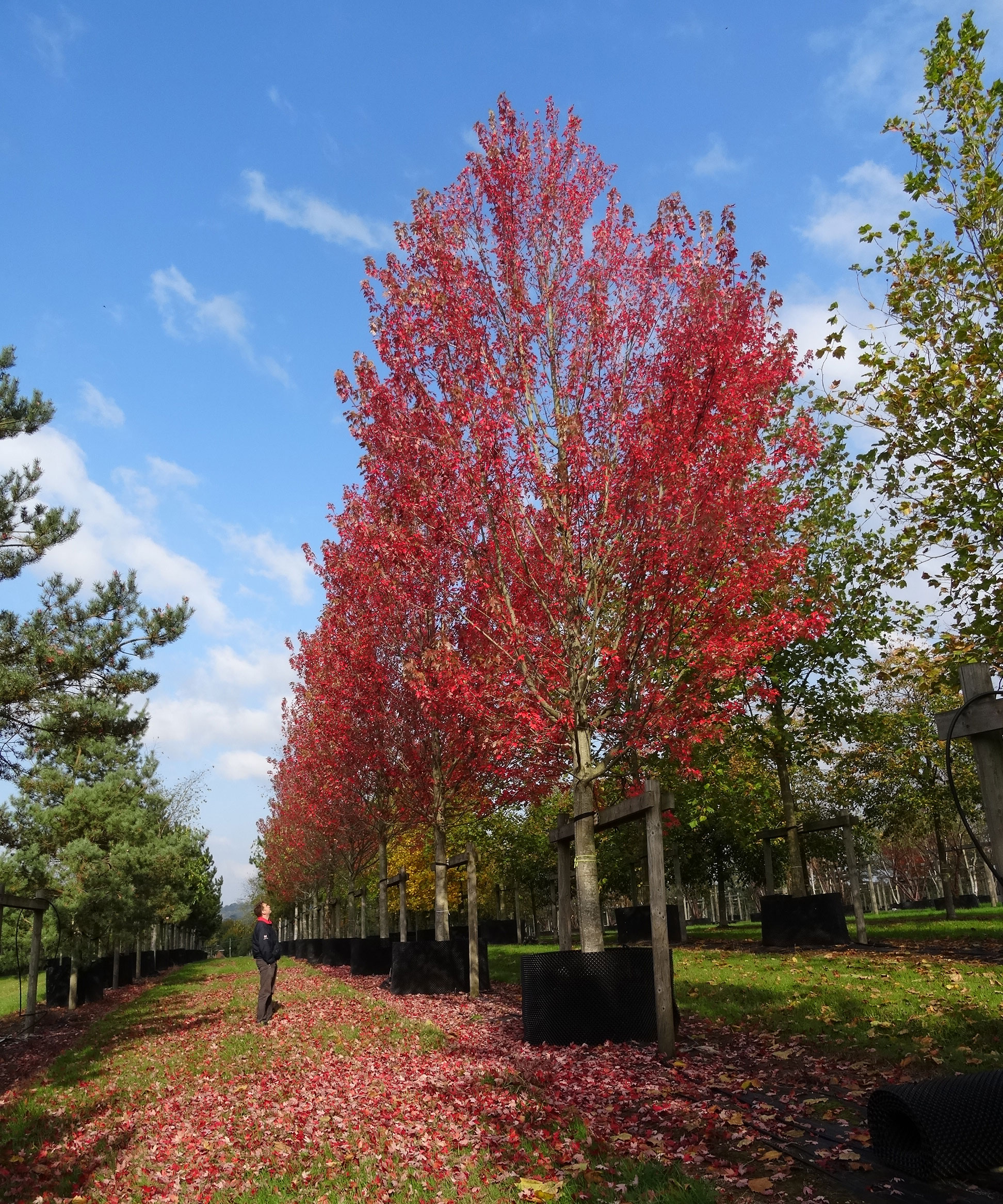
Acer x freemanii ‘Autumn Blaze’ 'is a unique variety of acer from a naturally forming hybrid between Acer rubrum (red maple) and Acer saccharinum (silver maple),' explain the experts at Hillier.
'It is tough and resilient like the silver maple, with the grace, beauty and vibrant color from the red maple. As the fall nights draw in, the tree’s emerald leaves ignite into a blaze of scorched orange and crimson reds, becoming a real centerpiece.
'These are resilient fall trees that will show their beauty regardless of location as they are not reliant on higher pH levels to enhance the glorious color.'
Best trees for fall color leaves
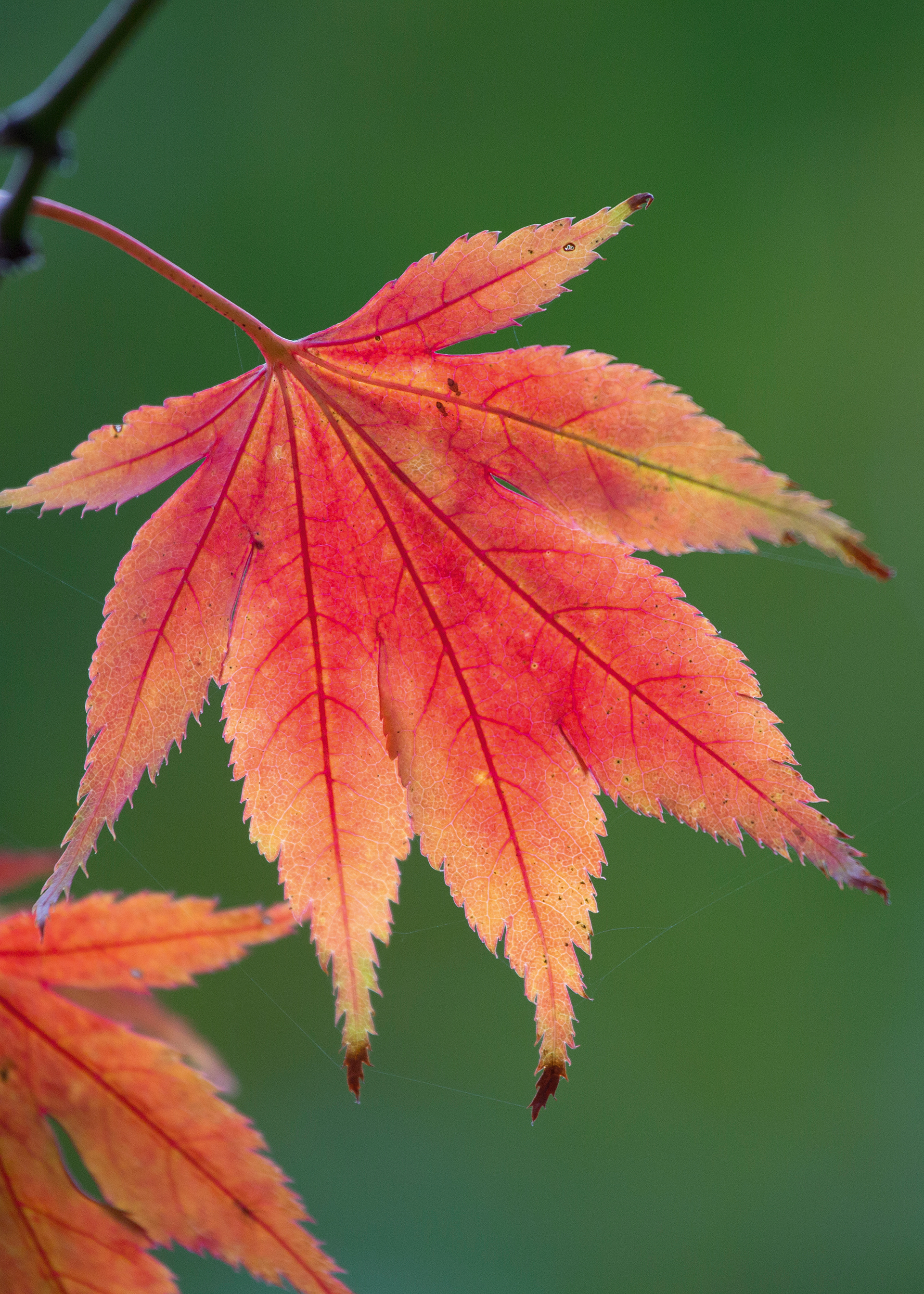
Change in leaf color is a real piece of natural magic that happens as deciduous plants slow their metabolism. The chlorophyll in leaves keeps them green through spring and summer. Shorter days and cooler temperatures trigger a gradual reduction in chlorophyll production and the other color pigments present in the foliage are revealed. In fall, trees take back nutrients from the foliage and deposit hard-to-eliminate waste products inside the leaves before they are shed.
Matt Hartline says that another noteworthy factor affecting a tree’s fall colors is the temperature fluctuations from daytime to evening time.
‘Years with dramatic fluctuations from warm days to cold nights yield the best fall foliage,’ he explains. ‘The temperature fluctuations influence the rate at which sugars are drawn out of the leaves.’
Two of his favorite trees for fall color are Nyssa sylvatica and Liquidambar styraciflua.
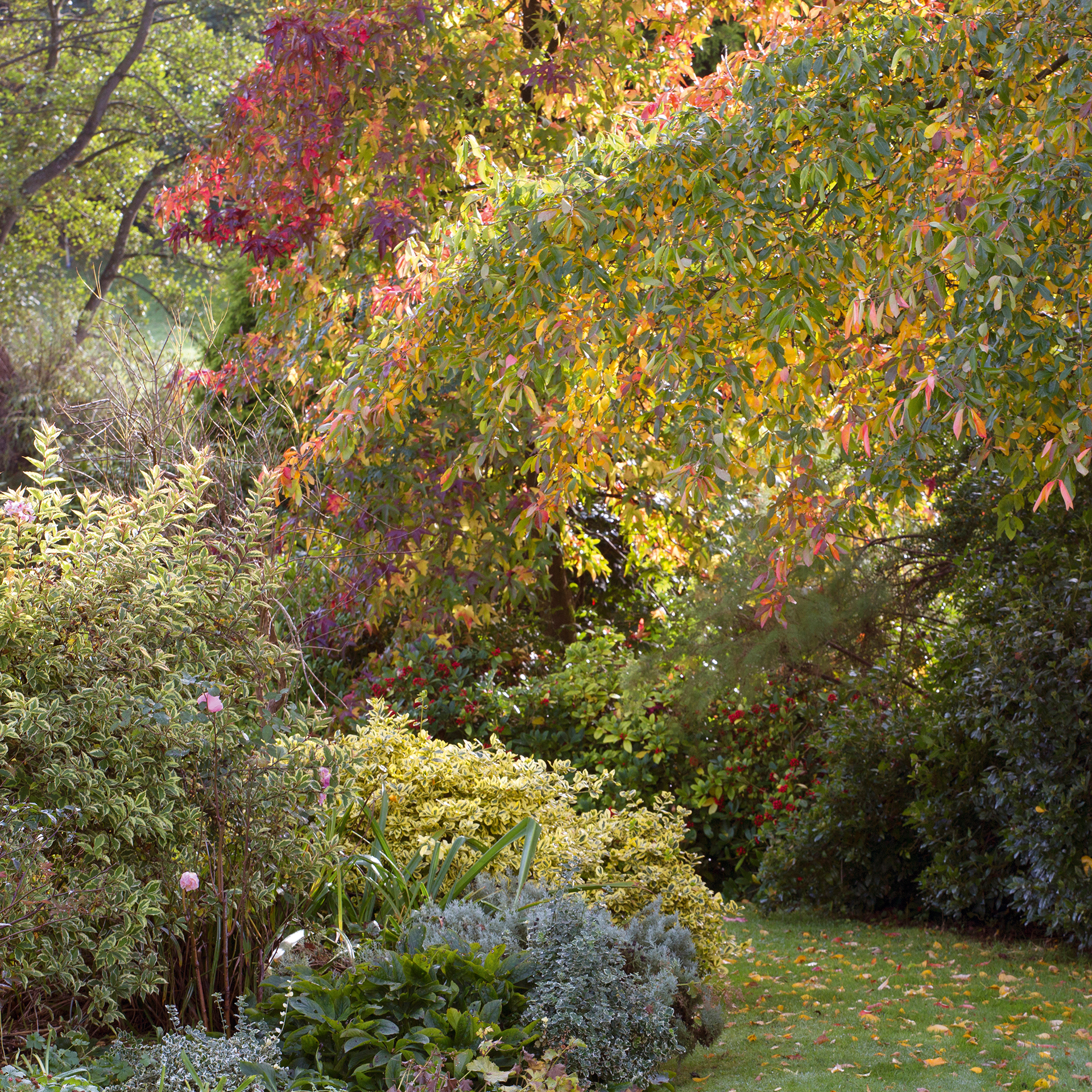
Nyssa sylvatica – also known as the Pepperidge tree, Tupelo, Black Tupelo, Black Gum
Nyssa sylvatica has a wide native range from the eastern US, all the way from Florida to Canada and is important as a wildlife garden idea for pollinating insects and birds. The form of their canopies tends to be broad spreading in maturity, with striking horizontal layers formed by long lateral branches.
Matt Hartline adds: ‘Pepperidge trees present gorgeous, albeit fleeting, crimson colored fall foliage. Relish the short lived treat to catch one of these beauties at their peak. They look lovely when planted as a copse to simulate a natural looking grove, but be sure to plant in full sun for these rather slow-growing fall trees to work their magic.'
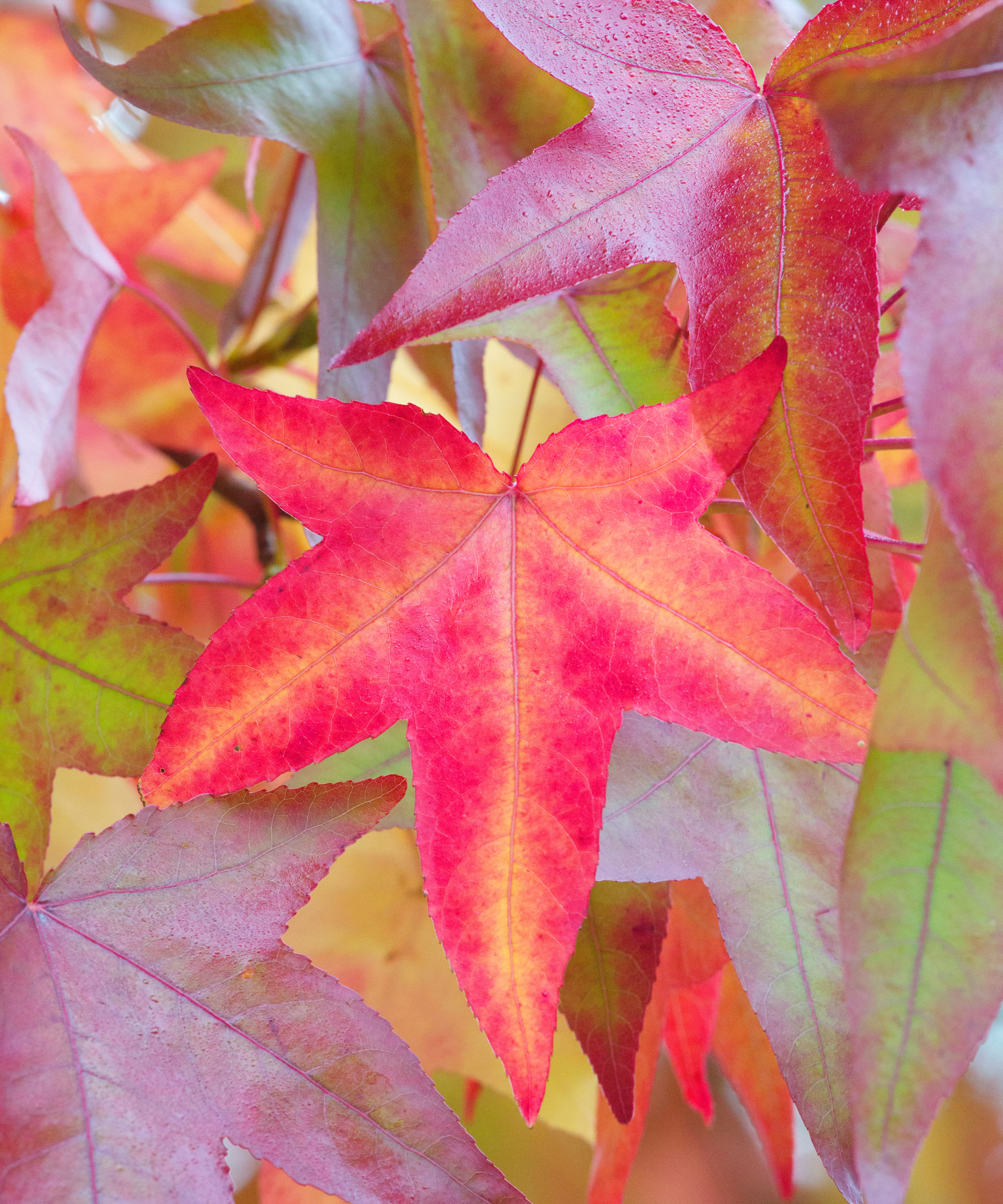
Liquidambar styraciflua – American Sweetgum
The star shaped sweetgum leaves populate large mature trees capable of attaining in excess of 100 foot-tall canopies. In fall, an array of colors are displayed, all on a single specimen.
‘Purples, oranges, reds and yellows are a dazzling source of eye candy. A multitude of hybridized cultivars are available to hone in on more precise hues, but the standard species is a reliable performer,‘ says Matt Hartline. ‘Give them lots of room to grow and enjoy the show!’
Japanese Stewartia – Stewartia Psuedocamila
These fall trees are a pleaser 365 days a year. Flowering trees, they have pretty, camellia-like flowers in the summer, and just when you think they’ve given you everything you could wish for in a specimen tree, they get better when the leaves turn fire-engine red.

Lirodendron tulipifera - tulip tree
The tulip tree needs room to grow and spread, making it an ideal choice as a specimen tree to sit under and enjoy its splendour through the seasons.
Quercus Paulstris – Pin Oak
The pin oak needs, fertile, well-drained moist soil and prefers full sun or partial shade. It has crimson leaves that hold well into winter and grows to a height and spread of 45ft x 24ft.
Cornus florida – flowering dogwood
This is a good choice for smaller gardens, with a height and spread of 12ft x 9ft. It prefers clay, loam and sandy soils and thrives in full sun or partial shade. Beautiful white flowers in summer are followed by red and purple leaves in fall.
Maple trees for fall color
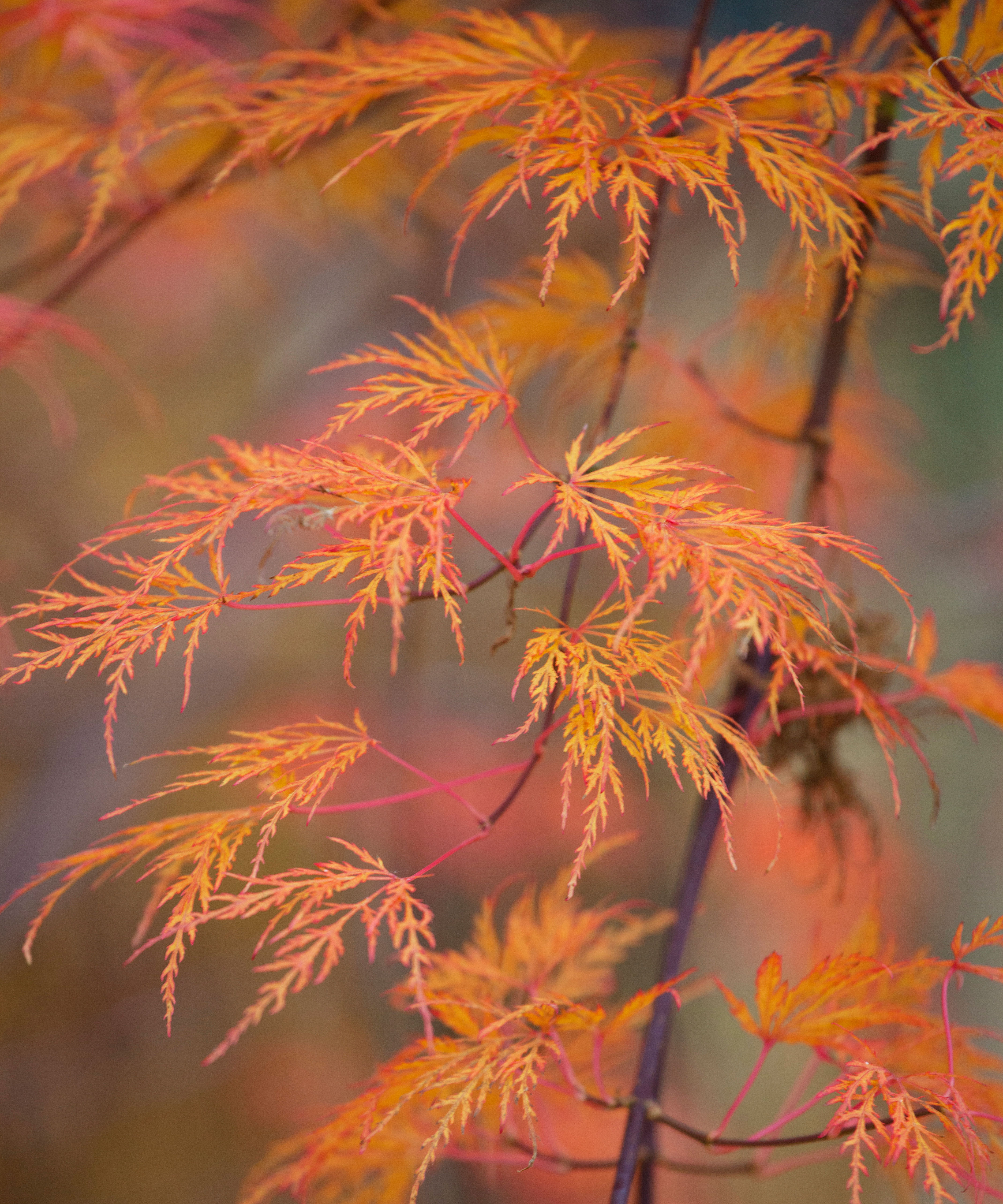
No one could overlook maples, or acers when thinking about the best trees for fall color. These trees are invaluable for their vibrant fall color of flaming golds and reds.
There is a huge range of varieties for sun or part shade, the more acid the soil and sunnier the aspect the better the color, but there are ones that are tolerant of most soil types as long as it is fertile. Smaller varieties, including many Japanese maple trees, or Acer palmatum, are lovely in containers, but make sure you protect their delicate foliage from strong winds.
Who better to recommend her favorite maple varieties for fall color, than gardening expert Mary Jane Duford , who says: ‘I live in Canada where we are wild about maple trees (especially the types with red leaves in the fall!) Here are three of my favorites fall trees, including some selected cultivars that are well-suited to the home landscape.'
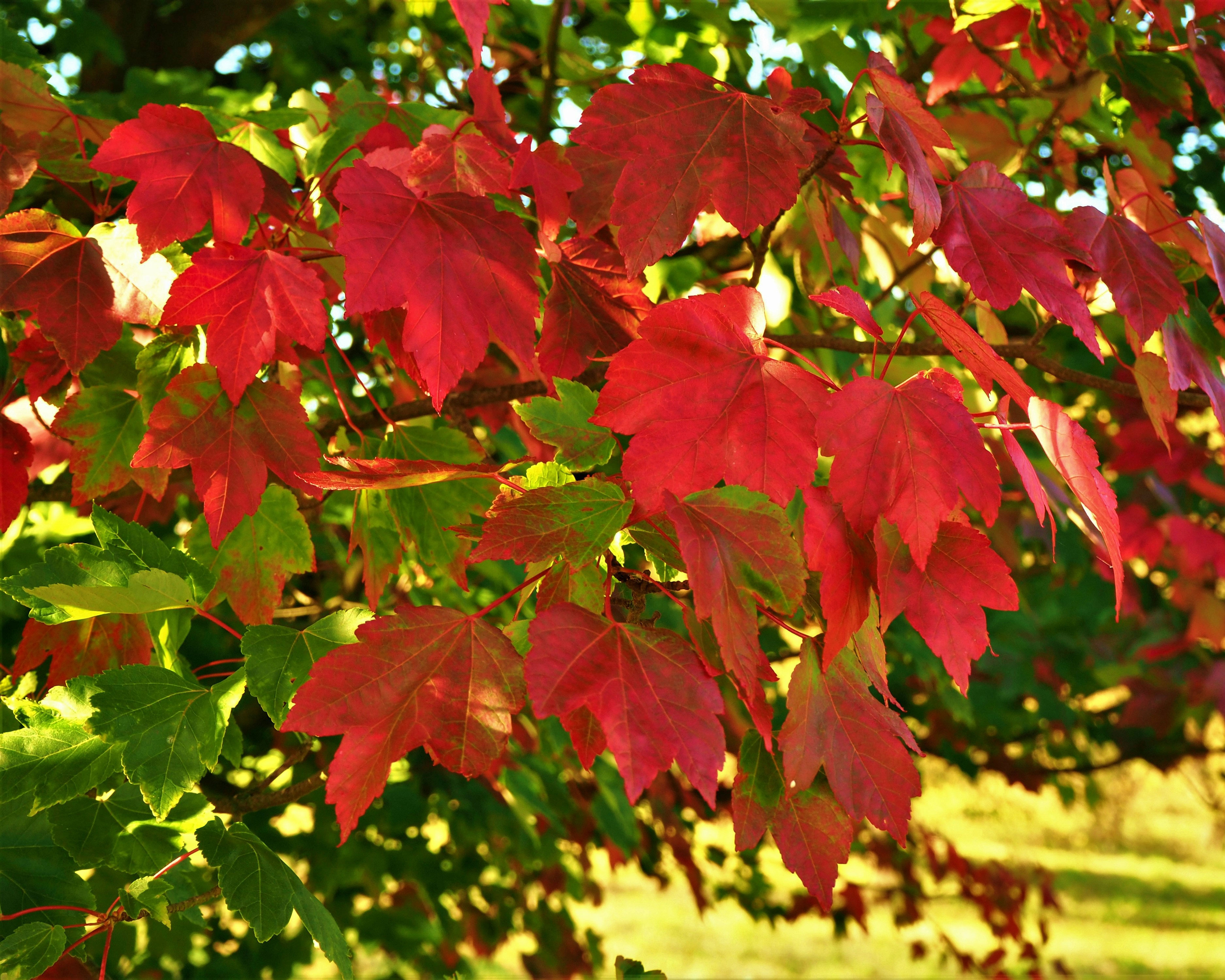
Acer rubrum – red maple
The red maple is a classic tree for fall color. Red maple trees grow best in nutrient-rich well-drained soil, but are tolerant of poorer soils. While these trees need regular watering at first, they tend to become tolerant to drought and are generally low-maintenance trees for homeowners. Red maples grow best in full sun, but are also tolerant of partial sun to partial shade.
Red maples are medium-large trees that are known to be both fast-growing and cold-hardy. The following cultivars are suitable for the home landscape, either as backyard shade trees or as best trees for front yards for stunning curb appeal.
‘October Glory’ is a cultivar of red maple known for its stunning orange-red fall color.
'The exceptional fall leaf colour of A. ‘October Glory’ turns later than other maples and continues through until the end of November, depending on where you live. You will be rewarded for the wait with the most fantastic display of candy apple reds, saffron and golden yellows,' say the Hillier experts, adding, 'it is best in slightly acidic soils, as it does not truly develop its fall color on dry or lime soils.'
‘Red Sunset’ has a rounded pyramidal shape. This modern introduction is very cold hardy, and can be grown in Zones 3-9.
‘Summer Red’ is a compact cultivar suitable for small yards. What make it special is that the leaves grow as a burgundy-red color in spring-summer, before maturing to yellow-orange-purple in fall.
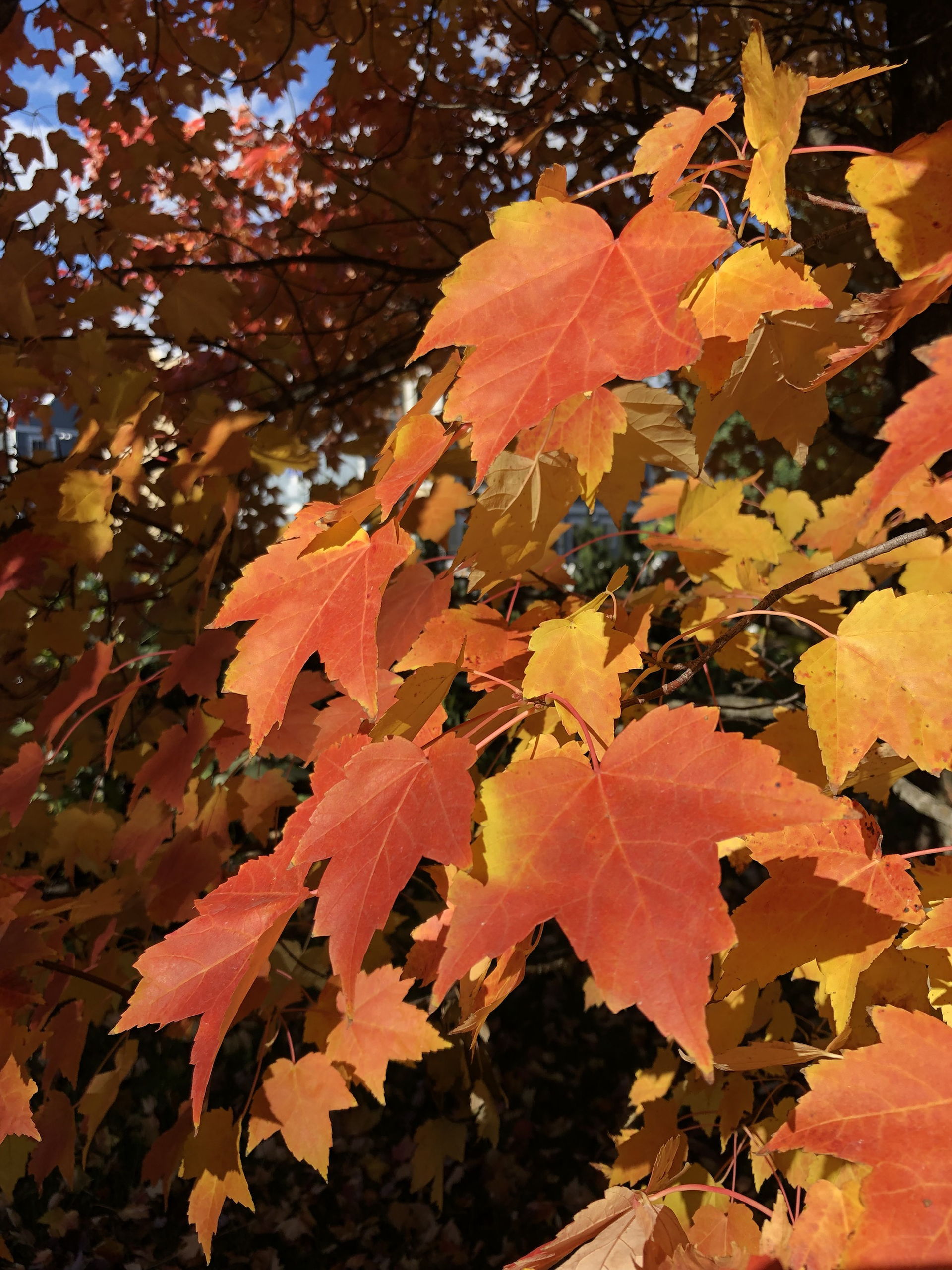
Acer × freemanii – Freeman Maple
The freeman maple is another spectacular choice for fall trees.
Freeman maples are very low-maintenance for homeowners once established. The fall color is downright magical in terms of curb appeal and the fallen leaves make excellent leaf mulch.
Here are some lovely varieties of freeman maple to consider for fantastic fall foliage:
‘Autumn Blaze’ is known for its vibrant red fall leaves. This variety thrives in Zones 3-8.
‘Firefall’ is a modern introduction with striking orange-red fall leaves.
‘Scarlet Sentinel’ is a cultivar of freeman maple with a compact form. The fall color of this variety is typically a bronze orange color, sometimes deepening to scarlet red.
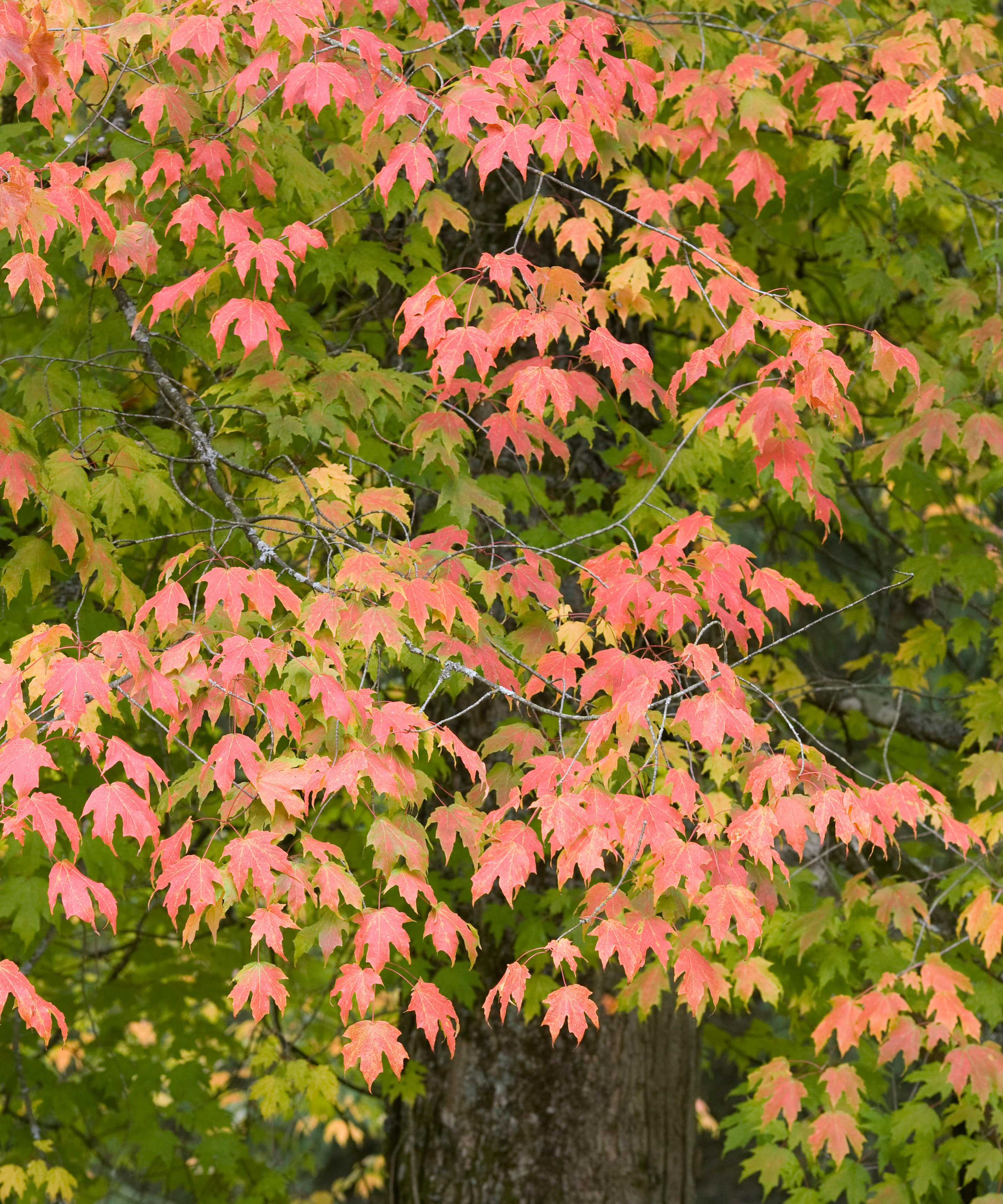
Acer saccharum – Sugar Maple
Sugar Maple is an outstanding tree for fall color on larger properties. These trees are just as well known for their brightly-colored fall foliage as they are for their delicious maple syrup. Here are some excellent cultivars for the home landscape.
‘Green Mountain’ is a quick-growing sugar maple that is naturally resistant to disease and tolerant of heat.
'Fall Fiesta’ is a large sugar maple with stunning fall foliage, hardy in Zones 3-8.
‘Legacy’ is a smaller sugar maple cultivar perfect for medium-sized yards. These trees are hardy in Zones 4-8.
Trees for fall color with berries and fruit
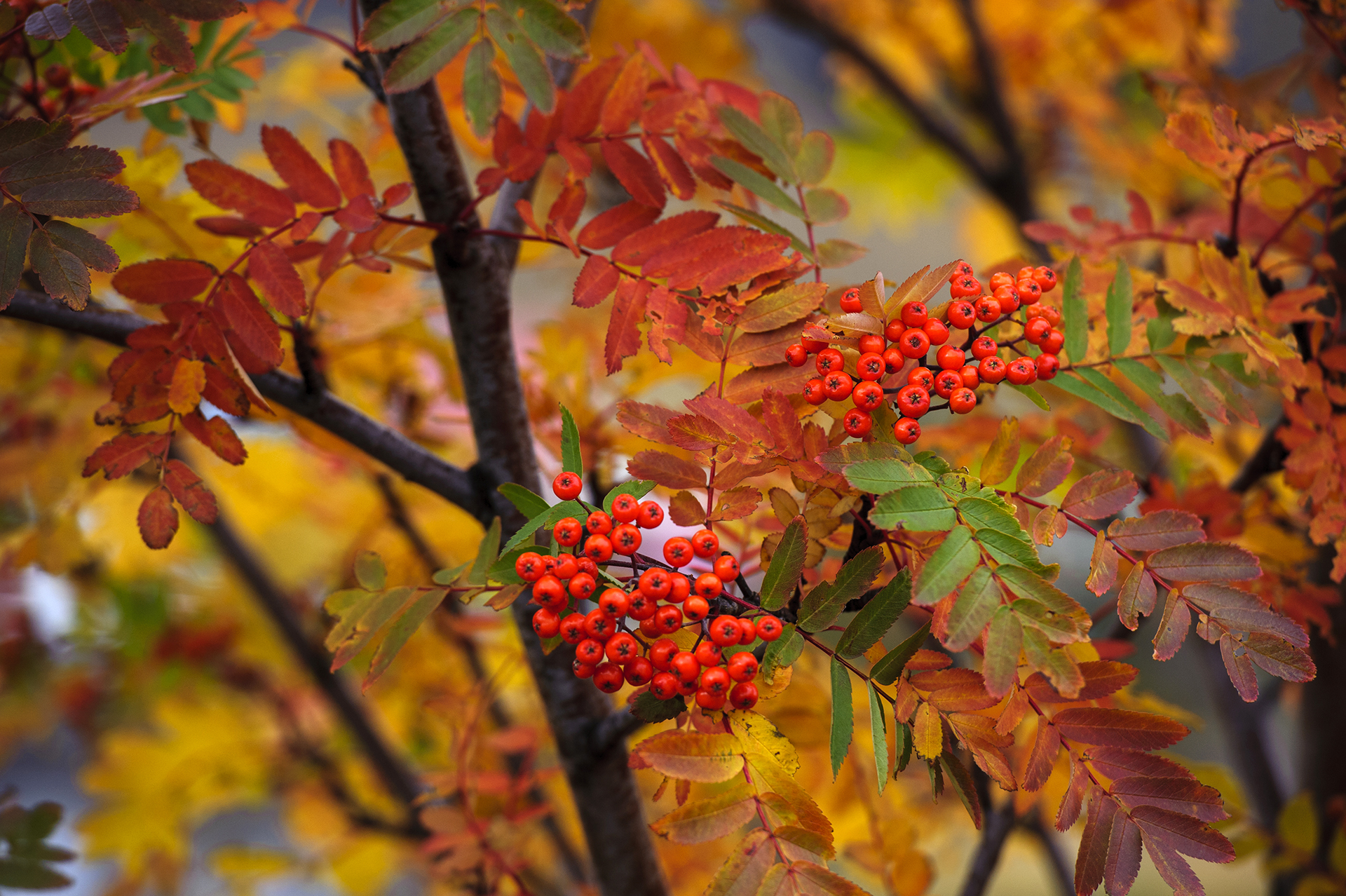
The scope of berries on fall trees is vast – from flame reds to deep plums, vivid purples and candy pinks or bronze, gold and burnt orange hues.
We are all familiar with red berries, but there are also unusual hues to explore in this jewel box of plants. Berries decorate the garden, and many fall trees are good plants for birds, providing a vital food source.
Berries can also supply lots of material for long-lasting floral arrangements indoors.
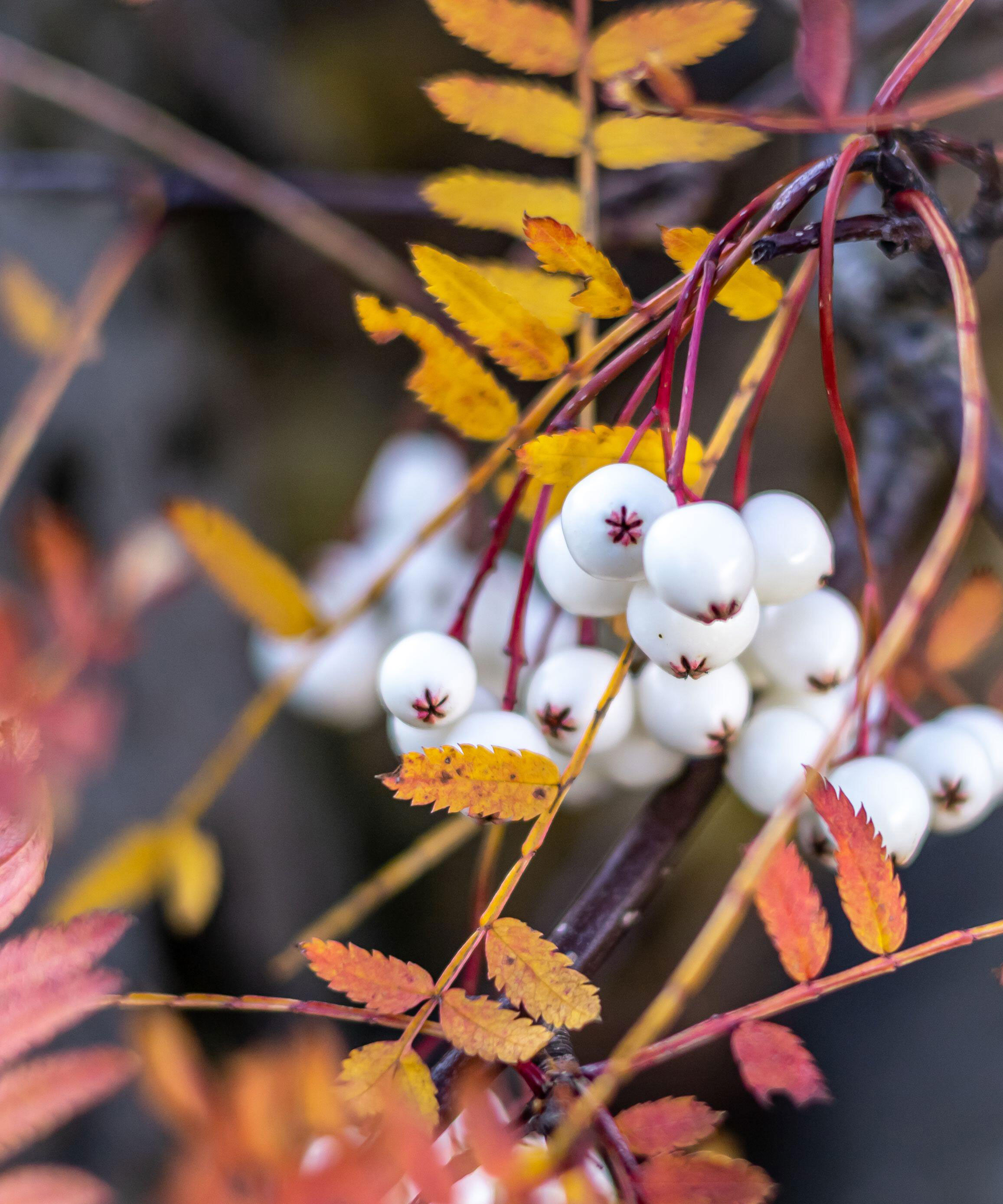
Sorbus Cashmiriana – Kashmir Rowan
Diana Beamish, who together with her husband has owned and run Trees Direct for more than 20 years, says 'My all time favourite tree for fall color is Sorbus Cashmiriana. It's also known as the Kashmir rowan, where it grows wild. It's happy on most well-drained soils, and tolerates full sun or semi-shade. Its striking foliage and berries make it a fall stunner, but it looks just as pretty in blossom in the early summer – a good year-round choice.'
Sorbus Cashmiriana is a great choice for smaller spaces. The large pale berries outlast the bright fall foliage.
Crataegus prunifolia – Flowering Thorn
The classic hedgerow tree, with a bushy habit, the flowering thorn is a favorite with birds, too. It thrives on chalk, clay loam and sandy soils. Glorious red and orange foliage and red berries, follow delicate white flowers in late spring / early summer.
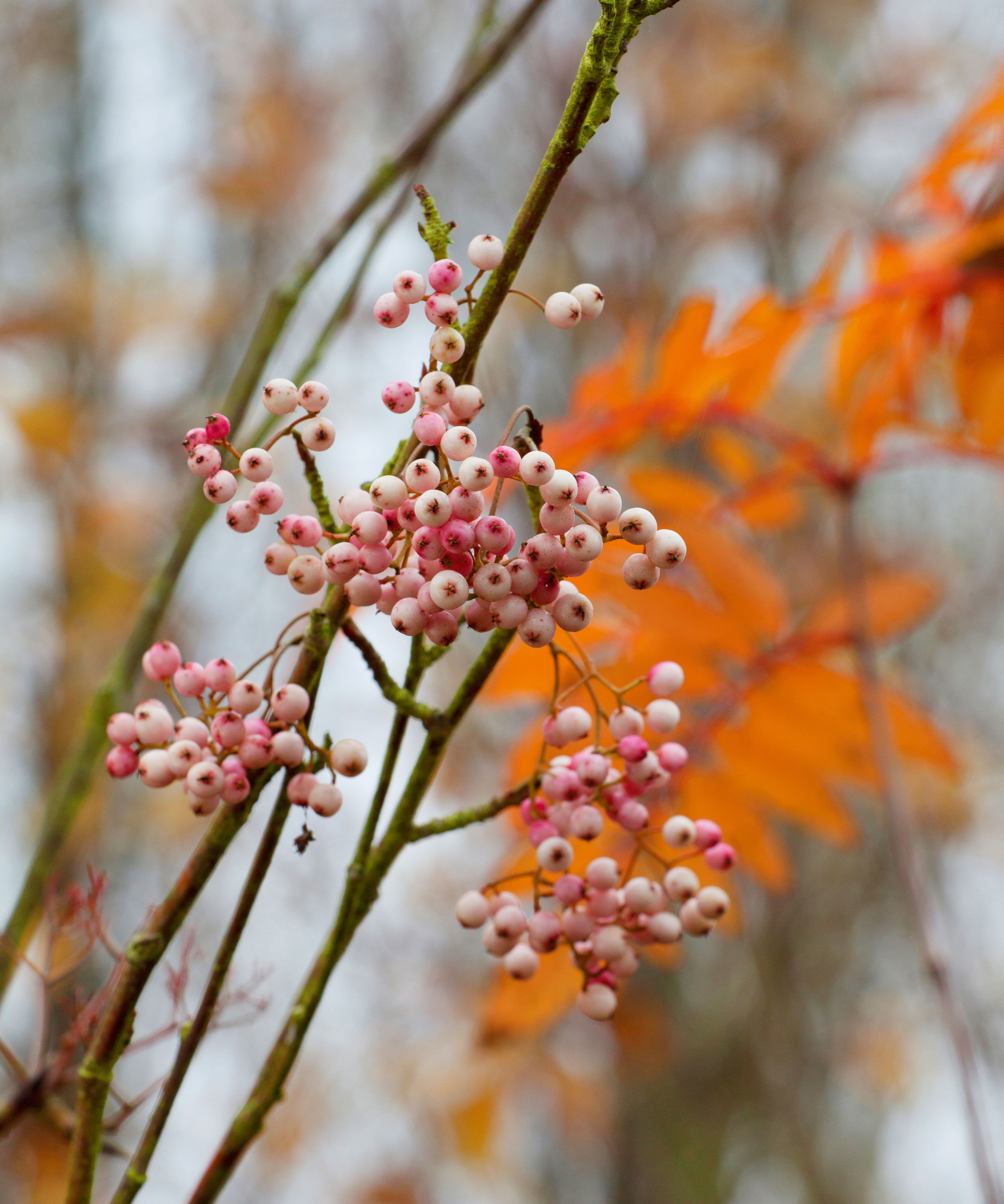
Sorbus
Sorbus trees have eye-catching pendulous clusters of berries in shades of pink, white, orange, yellow and red, as well as lovely fall foliage. These fall trees prefer a fertile, well-drained soil in sun or part shade. Use as a focal trees in flower bed ideas and wildlife gardens. Remember to water in prolonged dry periods in summer.
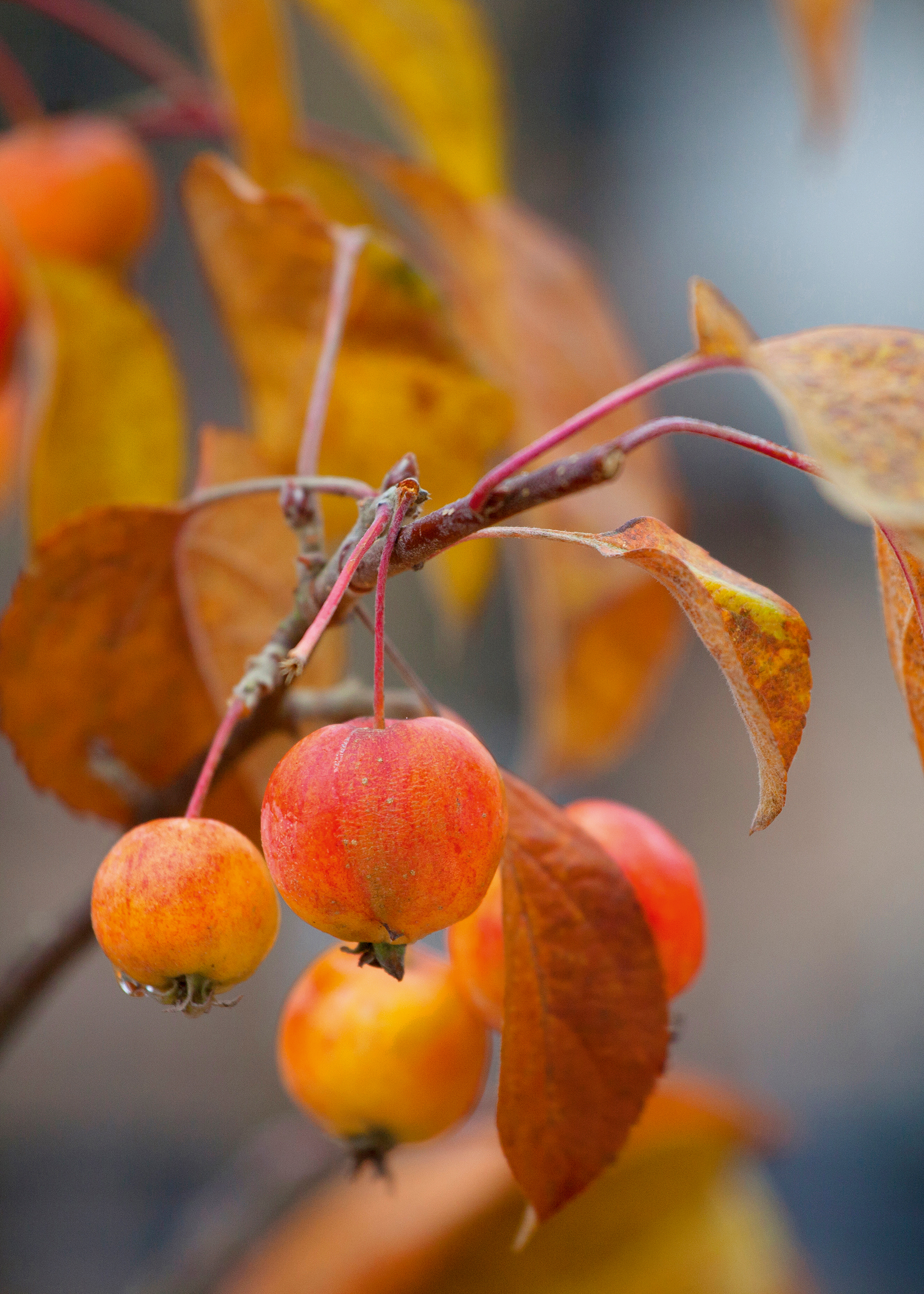
Malus Evereste – Crab apple
Crab apples have probably the best of all the winter fruits, and along with their pretty spring blossom have great versatility due to the range of sizes available. There are many small varieties that are ideal for smaller spaces, courtyards or even container gardening ideas, such as Malus ‘Red Jade’ or M. toringo subs. sargentii. Birds generally prefer the smaller crab apples.
For a larger space you can enjoy the spring flowers and fall fruit of rows of crab apples, maybe lining a drive or dotted across a lawn. Make sure you know how to plant crab apple trees to enjoy the best results.
Malus Evereste has a lot to recommend it with pretty white flowers in spring that open from scarlet buds and fade to pink and these glossy fruits flushed with red, orange and yellow.
What is the prettiest tree for fall color?
There are as many different pretty fall trees that offer spectacular seasonal color and help you to celebrate this most dramatic season in the garden. We've picked out our top choices, but there are plenty more to enjoy and discover. Do your research and seek advice from your supplier to check a variety's suitability for the position and conditions before you pick up a spade to start planting. Also choose the colors to complement other plants growing in your fall garden.
Then prepare for a sensational seasonal show for many years to come.
Karen sources beautiful homes to feature on the Homes & Gardens website. She loves visiting historic houses in particular and working with photographers to capture all shapes and sizes of properties. Karen began her career as a sub-editor at Hi-Fi News and Record Review magazine. Her move to women’s magazines came soon after, in the shape of Living magazine, which covered cookery, fashion, beauty, homes and gardening. From Living Karen moved to Ideal Home magazine, where as deputy chief sub, then chief sub, she started to really take an interest in properties, architecture, interior design and gardening.
